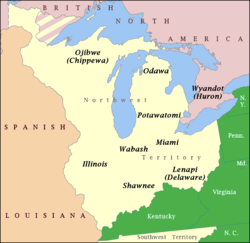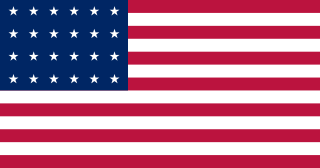
The Indian Territory and the Indian Territories are terms that generally describe an evolving land area set aside by the United States Government for the relocation of Native Americans who held aboriginal title to their land as a sovereign independent state. In general, the tribes ceded land they occupied in exchange for land grants in 1803. The concept of an Indian Territory was an outcome of the US federal government's 18th- and 19th-century policy of Indian removal. After the American Civil War (1861–1865), the policy of the US government was one of assimilation.

The Miami are a Native American nation originally speaking one of the Algonquian languages. Among the peoples known as the Great Lakes tribes, it occupied territory that is now identified as North-central Indiana, southwest Michigan, and western Ohio. By 1846, most of the Miami had been forcefully displaced to Indian Territory. The Miami Tribe of Oklahoma is the federally recognized tribe of Miami Indians in the United States. The Miami Nation of Indiana, a nonprofit organization of descendants of Miamis who were exempted from removal, has unsuccessfully sought separate recognition.

The Northwest Territory, also known as the Old Northwest and formally known as the Territory Northwest of the River Ohio, was formed in the United States after the American Revolutionary War. Established in 1787 by the Congress of the Confederation through the Northwest Ordinance, it was the nation's first post-colonial organized incorporated territory.

Thayendanegea or Joseph Brant was a Mohawk military and political leader, based in present-day New York, who was closely associated with Great Britain during and after the American Revolution. Perhaps the Native American of his generation best known to the Americans and British, he met many of the most significant Anglo-American people of the age, including both George Washington and King George III.
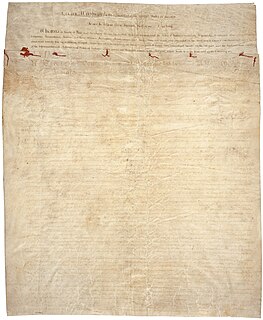
The Treaty of Greenville, formally titled Treaty with the Wyandots, etc., was a 1795 treaty between the United States and indigenous nations of the Northwest Territory, including the Wyandot and Delaware peoples, that redefined the boundary between indigenous peoples' lands and territory for European American community settlement.

The Beaver Wars, also known as the Iroquois Wars or the French and Iroquois Wars, encompass a series of conflicts fought intermittently during the 17th century in North America. They were battles for economic dominance throughout the Saint Lawrence River valley in Canada and the lower Great Lakes region which pitted the Iroquois against the northern Algonquians and the Algonquians' French allies. From medieval times, Europeans had obtained furs from Russia and Scandinavia. American pelts came on the European market during the 16th century, decades before the French, English, and Dutch established permanent settlements and trading posts on the continent. Basque fishermen chasing cod off Newfoundland's Grand Banks bartered with local Indigenous peoples for beaver robes to help fend off the Atlantic chill. By virtue of their location, the tribes wielded considerable influence in European–Indian relations from the early seventeenth century onwards.
The Seneca are a group of indigenous Iroquoian-speaking people native to North America who historically lived south of Lake Ontario. Their nation was the farthest to the west within the Six Nations or Iroquois League (Haudenosaunee) in New York before the American Revolution.
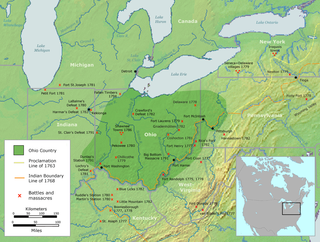
The Ohio Country was a name used in the mid- to late 18th century for a region of North America west of the Appalachian Mountains and north of the upper Ohio and Allegheny Rivers extending to Lake Erie. The area encompassed roughly all of present-day states of Ohio, northwestern West Virginia, Western Pennsylvania, and a wedge of southeastern Indiana.

Tecumseh's War or Tecumseh's Rebellion was a conflict between the United States and Tecumseh's Confederacy, led by the Shawnee leader Tecumseh in the Indiana Territory. Although the war is often considered to have climaxed with William Henry Harrison's victory at the Battle of Tippecanoe in 1811, Tecumseh's War essentially continued into the War of 1812 and is frequently considered a part of that larger struggle. The war lasted for two more years, until 1813, when Tecumseh and his second-in-command, Roundhead, died fighting Harrison's Army of the Northwest at the Battle of the Thames in Upper Canada, near present-day Chatham, Ontario, and his confederacy disintegrated. Tecumseh's War is viewed by some academic historians as the final conflict of a longer-term military struggle for control of the Great Lakes region of North America, encompassing a number of wars over several generations, referred to as the Sixty Years' War.
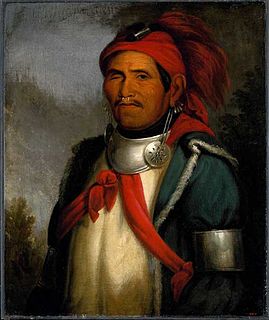
The Shawnee are an Algonquian-speaking ethnic group indigenous to North America. In colonial times they were a semi-migratory Native American nation, primarily inhabiting areas of the Ohio Valley, extending from what became Ohio and Kentucky eastward to West Virginia, Virginia, Pennsylvania, and Western Maryland; south to Alabama and South Carolina; and westward to Indiana and Illinois.
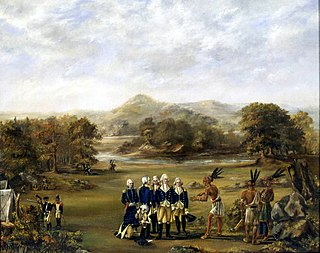
The Northwest Indian War (1785–1795), also known as the Ohio War, Little Turtle's War, and by other names, was a war between the United States and the Western Confederacy, with support from the British, for control of the Northwest Territory. It followed centuries of conflict over this territory, first among Native American tribes, and then with the added shifting alliances among the tribes and the European powers of France and Great Britain, and their colonials. The United States Army considers it their first of the United States Indian Wars.

The Western theater of the American Revolutionary War (1775–1783) was the area of conflict west of the Appalachian Mountains, the region which became the Northwest Territory of the United States as well as the states of Kentucky, Tennessee, and Missouri. The western war was fought primarily between American Indians with their British allies in Detroit, and American settlers south and east of the Ohio River.

The Treaty of Canandaigua also known as the Pickering Treaty and the Calico Treaty, is a treaty signed after the American Revolutionary War between the Grand Council of the Six Nations and President George Washington representing the United States of America.
The Sixty Years' War (1754–1815) was a military struggle for control of the Great Lakes region in North America, encompassing a number of wars over several generations. The term Sixty Years' War is used by academic historians to provide a framework for viewing this era as a whole.
The Treaty of Fort McIntosh was a treaty between the United States government and representatives of the Wyandotte, Delaware, Chippewa and Ottawa nations of Native Americans. The treaty was signed at Fort McIntosh on January 21, 1785. It contained 10 articles and an addendum.

The Treaty of Fort Harmar (1789) was an agreement between the United States government and numerous Native American tribes with claims to the Northwest Territory.
Egushawa, also spelled Egouch-e-ouay, Agushaway, Agashawa, Gushgushagwa, Negushwa, and many other variants, was a war chief and principal political chief of the Ottawa tribe of North American Indians. His name is loosely translated as "The Gatherer" or "Brings Together". He was a prominent leader among the Detroit Ottawa, a prominent group in southeast Michigan and northwest Ohio. Egushawa is considered a successor to Chief Pontiac. As a leader in two wars against the United States, Egushawa was one of the most influential Native Americans of the Great Lakes region in the late eighteenth century.

The Treaty of Fort Stanwix was a treaty finalized on October 22, 1784, between the United States and Native Americans from the six nations of the Iroquois League. It was signed at Fort Stanwix, in present-day Rome, New York, and was the first of several treaties between Native Americans and the United States after the American victory in the Revolutionary War.
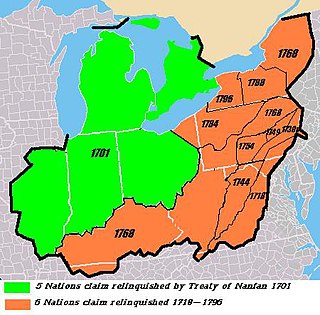
The Six Nations land cessions were a series of land cessions by the Iroquois "Six Nations" and Delaware Indians in the late 17th and 18th centuries in which the natives ceded nearly all of their vast conquered lands as well as ancestral land within and adjacent to the northern British colonies of North America. The land cessions covered most or all of the modern states of New York, Pennsylvania, western Maryland, Virginia and West Virginia, Kentucky, northeastern Ohio and extended marginally into northern Tennessee and North Carolina. The lands were bordered to the west by the Algonquin tribal lands of Ohio Country, Cherokee lands to the south, and Creek and other southeastern tribal lands to the southeast.
The Cherokee people of the southeastern United States, and later Oklahoma and surrounding areas, have a long military history. Since European contact, Cherokee military activity has been documented in European records. Cherokee tribes and bands had a number of conflicts during the 18th century with European colonizing forces, primarily the English. The Eastern Band and Cherokees from the Indian Territory fought in the American Civil War, with bands allying with the Union or the Confederacy. Because many Cherokees allied with the Confederacy, the United States government required a new treaty with the nation after the war. Cherokees have also served in the United States military during the 20th and 21st centuries.
